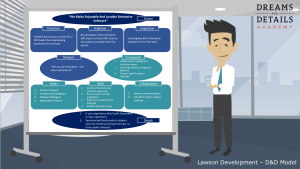13 Recommendations from the Dreams & Details Methodology
By Mikael Trolle (CEO & Co-Founder of IDONEA)
and Tjorven Ludes (Marketing Coordinator of IDONEA)
Content:
- A Time of Radical, Inevitable Change – And Opportunity
- 13 Recommendations to Lead Through Change & Unpredictability
- Key Takeaways & Closing Thoughts
You have to […] challenge your assumptions and your behaviors of the past. Rethink your [business] model: What, of what I do, can be leveraged in this situation? And how do I make sure that I become a solution to the future rather than just trying to survive the past?
Jim Hagemann Snabe (Co-Founder & Chairman of Idonea)
A Time of Radical, Inevitable Change – And Opportunity
The challenges that leaders are facing these days are not new – they have been there for years. The pandemic has merely brought them to the center of attention and accelerated their radicality and abruptness. Even leaving the pandemic aside, we are living in a time of radical and inevitable change, marked by the acceleration of innovation and disruption.
Over the last three years, we have therefore proposed the need for a paradigm shift in leadership. Leaders need to accept that managing against a predefined business plan is no longer sufficient. To navigate through disruption and constant change, businesses must reinvent themselves repeatedly – optimally from a position of strength. To accomplish that, leaders should inspire their organizations and employees to pursue ambitious dreams (purposeful visions) that create future-oriented value for all stakeholders. They have to challenge the underlying assumptions of their business and identify the most crucial details that need change to become a major player in future arenas. Importantly, leaders need to empower employees, help them develop the essential capabilities required to reach this dream, and unleash their potential. We call this leadership model “Dreams and Details”.
The current crisis offers a golden opportunity for leadership: A blank canvas. As uncertainty and unpredictability rule our lives, organizations need to reset. This liberates businesses from pre-established structures and outdated habits and enables them to rethink, restructure, and reinvent. Now is the time for leaders to challenge outdated assumptions and behaviors and start accelerating the business of the future, rather than trying to capitalize on the past. Turn challenge into opportunity.
Based on the Dreams and Details Leadership model we have 13 recommendations for you on how to create opportunities and a resilient business in an unpredictable future.
The Dreams and Details leadership philosophy provides you a way to identify and implement much-needed changes in your organization to build a more adaptable, resilient, and performance-driven organization able to navigate through change and disruption at large.
13 Recommendations to Lead through Change & Unpredictability
- Focus on the future, not the past. Leaders cannot look back if they aspire to build tomorrow’s businesses. The Covid-19 pandemic has accelerated changes and challenges which have been looming on the horizon for some time now. It has sparked and sped up digitalization and innovation, as well as it has highlighted how business models are changing. Meanwhile, sustainable and responsible businesses that create value for all stakeholders (not just shareholders) have proven to be more resilient and prepared to overcome major challenges, changes, and disruption.
To build a business of the future, leaders have to establish an inspiring and ambitious dream of a desirable future for the company to strive for. This dream needs to give a clear sense of direction and purpose, laying the foundation for a promising future that engages the employees to unfold their potential and reach new levels of performance (to gain a better understanding of the Dreams & Details model click here). Don’t think defensively but also innovatively.
- Empower your employees and unleash their potential. Fast decision-making processes are vital, which means that decisions have to be decentralized to a large extend. How do you do that?
For your employees to become more autonomous decision-makers, as a leader, you need to establish alignment in the mindset and the framework to move in. This means that you will have to give a framework of rules, standards, and norms for your employees to follow and to find the right mindset to navigate through challenges. This mindset should give guidance to your employees regarding what to prioritize when making decisions. You have to make sure that the mindset you communicate enables them to work in a direction that leads your organization into the future by pursuing an inspiring and ambitious dream.
Once your employees adopt the organizational mindset and framework, they can move freely within these confines and need less micromanagement. They will, therefore, be capable of becoming more autonomous problem-solvers, speeding up decision-making processes immensely. At the same time, this will enable employees to think more freely and innovatively, which in turn means that leaders can rely more on their employees to come up with solutions for the current situation and the future. Use the chance to pass more responsibility to your employees and to establish the foundation for a future of a more engaged and innovative work culture. (Want to find out more about this? We have some insights and tips on how to empower and engage employees)
- Communicate the dream and the mindset needed to achieve it. Communication is absolutely essential. Leaning on the previous point of empowering your employees, leaders have to make sure that the mindset and framework are consistently communicated, to give much-needed security to the employees, and to enable them to become more autonomous actors.
Importantly, leaders have to make sure to give their employees something to work for that gives them purpose. This purpose arises from the organizational dream, which is an ambitious vision for the future. It is that inspiring in its direction that your employees will feel as a valuable part of a larger journey and consider their work meaningful to reach the bigger purpose. Meaning-driven employees will unleash their potential and perform to their best abilities. Also make sure that your organizational members know what roles they need to excel in and set up clear channels and structures of communication that enable the close collaboration of employees also without your interference.
- Balance short-term (crisis) management considerations with medium- and long-term perspective. Double down on strategic intent. Naturally, short-term (crisis) management is a priority to ensure business continuity today, but the long-term strategic intent has to be kept a focus. Considering the latest developments, it may have to be rethought. Likely, new dimensions have to be added to account for the future. Nevertheless, the current situation has to be capitalized on to rethink the existing business and develop it to enter a new season. If companies only concentrate on the ‘here and now’ while neglecting the future, they might miss out on arising opportunities or business-changing developments. Use the occasion to make the needed changes to accelerate the future in your organization.
- Imagine possible futures and act accordingly. Analyze trends, consider possible versions of the future, and think out different paths of how the world, society, economy, industry, and business might develop. The world is changing at an increasing speed and scale. Use the occasion to really take the time to consider the changes happening that will affect your business now and in the future. Here are some aspects to reflect on: What will it mean to be successful in the future? What is your dream, and what are your ambitions? Could your company become a key player in a future arena in such a way that it would inspire employees and customers? And how would that change your position in the value chain as well as your share of wallet?
Don’t just concentrate on the recent crisis and its impact, but also how innovation and changes in consumer demands might impact your business. Draw out different possible futures and consider (1) how likely they might be, (2) how they would affect your business, (3) which adjustments they might need from you and your employees, (4) what your organization’s role would be in those futures, and, finally, (5) how your business can actively co-create such a future. When you do that, consider different levels (such as customers, your organization, the industry, the value chain, society, etc.) and what role you would play in which area. Then, take these considerations as a starting point to begin preparing for those futures.
- Reconsider your (core) competencies. How can you reimagine your core competencies to satisfy customer needs now and in the future? That has to be one of the main questions, leaders should think about right now. A crisis forces most of us to rethink our business model and offering, as the business environment and customer demand fundamentally change. So why not just do it now?
Ask yourself: Is it enough to optimize your current core competencies, or do you have to reinvent them to compete in the future? Where are possible (core) competencies ‘hiding’ in your organization? Reflect on how the competencies of your organizations (or of specific areas) might be utilized effectively in a different context. What is it really that your organization is good at? What is the value that you offer consumers or customers? Does your organization possess some expertise that could be translated into a new core competency? Those questions, alongside the following point, build the foundation for initiating a reinvention process.
(How do you know if it’s time to reinvent and how do you approach it? Find out more in our Quick Guide to Reinvention)
- Challenge your assumptions and reinvent your organization to enter a new and promising season. To identify the opportunities the future holds for you, we suggest doing the following: Don’t take underlying assumptions for granted but challenge the status quo. Question the way things are done in the organization, where there is potential for improvement, which processes might be unnecessary, and where you might have expertise and competencies that are untapped or underutilized so far. While you rethink, consider how the future might look like for the organization and which changes are needed to succeed then. Analyze how you might rethink and reinvent your business on that basis.
- Drive Digitalization. We are moving into an increasingly digital future, where the internet facilitates more and more areas of life and business. This means that services and communication will increasingly be demanded in digital form. Therefore, it’s time to commit to digitalization on all levels (communication, administration, and services). To do so, think about: Which services or expertise (or parts of it) can you offer digitally? Take the pandemic as a wake-up call for how extraordinary events can disrupt everyday business (conduct), but also how near-endless the possibilities in the digital world are. Investing in your digital infrastructure now will not only be advantageous for the current situation but also set you up to thrive in a digital future.
- Be truly customer-centric. Ask yourself: What do your customers really need? What will they need in the future? How might you provide new solutions, or which parts of your existing solutions can you advance? What are customer pain points, and how can you utilize your expertise to help – now and in the future? There are many more questions in this direction that you can look into. (For inspiration, have a look at our case-story on customer-centric reinvention). The solutions you might come up with when truly focusing on customer needs might have a higher likelihood of meeting future customer demands.
- Upskilling and reskilling. Make sure that time is used to learn and develop new skills that might have been neglected or deprioritized previously. To thrive in a new season and to compete in new arenas, reskilling and upskilling become vital. Usually, most employees are too occupied with day-to-day tasks and responsibilities to dedicate time to upskilling. Make sure there is time and that they use it to continue learning and developing. As a leader, you need to put thought into which skills might be required in your business and industry of tomorrow, based on recent developments and tendencies of innovation in your industry. Encourage your employees to learn those skills that will be vital to contribute to your organization in the future. That way, your organization can actually use the time to prepare for the future of your business, industry, and customers.
- Move fast and agile. While businesses may usually rely on a heave of more or less relevant data to base their decisions on, the pandemic fundamentally changed the reality we live in. There was no blueprint of what to do and how to do it, which in turn implied that businesses had to find out what works by trying. This won’t change much in the future, as the speed of change and innovation is drastically accelerating in general. Organizations that work agile have a significant advantage as speed trumps elegance (and size for a matter of fact). Investing too much time to develop a particular solution to perfection, just to recognize it might have been designed to respond to past demands, means wasting valuable time and resources (-> the dilemma of artificial demand). Organizations need to be fast with developing solutions, try them, analyze the immediate data, work in iterations, and adjust according to the instant feedback. Such an agile approach will not only benefit you in the crisis, but it will also be the best way to maneuver in an unpredictable future. We have to approach the future as an infinite journey, which will be handled and controlled based on the situation at hand. Meanwhile, we need to continuously develop our toolbox to secure our agility and resilience.
- Learn. Leaders have to learn from the crisis to handle the unexpected. As previously mentioned, the current time period is unprecedented in the speed and volatility of changes for society and businesses. However, with increasing globalization as well as international and intercontinental connectivity, exchange and trade, future crises can more likely be of global scale and originate from different parts of the world. More importantly though, it also means that locality is increasingly irrelevant for innovation and progress. Leaders will have to expect the unexpected, think the unthinkable, and prepare their organizations to either spearhead change or react fast and effectively. This most recent crisis is only one way that leaders were – and will be – challenged to find solutions to not only ensure business continuity but also to actively co-create the future for their customers. It thus offered a chance to learn how to perform amidst stress, chaotic circumstances, and radical change.
- Grab the opportunity! Many leaders are typically caught in a game of outdated and restricting expectations. They are bound by expectations of perseverance and planned results, rather than being allowed to take the necessary risks to innovatively co-create the future. Yet, in times characterized by unpredictability, detailed business plans are bound to fail, and leaders actually need to take risks just to secure business continuity. This period of time might, therefore, be a stepping stone for a new generation of leaders that are less fixated on planning outcomes but prioritize performance, adaptability, flexibility, and innovation (even though that means taking risks).
Humans, by nature, don’t feel comfortable dealing with unpredictability, but to desperately hold on to long-term result-based planning, in a world marked by the acceleration of change and innovation, is, at best, a questionable strategy. Leaders have to motivate and inspire people to follow a journey rather than a defensive and reachable plan based on predetermined results, which might likely turn out to be irrelevant for the future. This requires a change of mindset and in the approach to motivation – but it paves the way for unleashing the potential of the individual employees and the organization as a whole. This most recent crisis might thus actually raise the awareness throughout whole organizations, that the ‘old way of doing things’ might be outdated and that new times need new leadership. It provides leaders the rare chance of working with a ‘blank canvas’: Freed from obsolete structures and expectations, they have the opportunity to reflect, rethink, restructure, and reinvent to build an organization for the future.
Key Takeaways and Closing Thoughts
One of the key takeaways for leaders from the pandemic should be: What might seem to be an unlikely scenario today can quickly become the new reality of tomorrow. The world we live in is drastically changing, accelerated by globalization and innovation. The challenges and changes leaders are seeing today are not new – the pandemic has merely accelerated and reinforced them. This makes it crucial for leaders to expect the unexpected and to prepare organizations for shortening cycles of change and disruption (crisis or not). In this reality, detailed business plans become increasingly ineffective and limiting to performance.
Business strategies have to change from trying to plan the future towards proactively preparing for it. Organizations need to build resilience, flexibility, and adaptability. Rather than trying to plan specific numeric results, leaders should focus on creating an innovative, high-performance culture and unleash human potential. They need to empower and engage their employees and equip them with the tools to become more autonomous solution-finders and decision-makers. Leaders need to give purpose to employees by inspiring them with an ambitious direction (an organizational dream) for the company to follow instead of restricting performance with detailed plans and result-oriented rewards.
As you need to lead in the short term, the more you do that based on your long-term intent, your purpose, and your contribution to society, the more you will be able to leverage the crisis to become an opportunity for your company.
Jim Hagemann Snabe
That way, organizations build the foundation for striving in an unpredictable future. The aim of leaders has to be to prepare their business for a new season and adapt early (or even actively co-create it) rather than to react to it (when it might be too late). This also means that organizations will have to periodically (and likely in increasingly shorter intervals) rethink their business and reinvent themselves – preferably from a position of strength.
As for this crisis and assuming we won’t go back to an ‘old normal’, we would give business leaders the following advice: Leverage the crisis to rethink and challenge your business and its underlying assumptions to find new ways to offer value. Progress and innovation don’t come without challenging the status quo, and that is, in many cases, not only the way to overcome the crisis but more so to actively co-create the future. Make sure to become a solution to the future rather than trying to survive or make money of the past.
Finally, our (probably) most crucial advice: In the future, don’t wait for the next crisis to rethink and reinvent your business. With the speed and radicality of change, leaders need to challenge their assumptions frequently and search for new developments, disruptions, and opportunities. Only by identifying new possibilities early can you leverage a position of strength to swiftly reinvent your organization without risking drastic business decline and potential bankruptcy. In turn, only by periodically reinventing your business can you avoid becoming disrupted and irrelevant and remain a major player, sustain success, and spearhead innovation instead.





